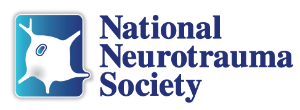Main Menu
Description & Objectives WS02
WS02: TBI Preclinical Research Methods









Chair: Kenneth Curley, MD
WS02.01 - Penetrating Ballistic Brain Injury (PBBI) Model (Rodent)
Deborah Shear, PhD – Walter Reed Army Institute of Research
WS02.02 - Projectile Concussive TBI (PCI) Model (Rodent)
Frank Tortella, PhD – Walter Reed Army Institute of Research
WS02.03 - Blast Physics and Open Field Blast Models (Rodent, Swine)
Timothy Walilko, PhD - Applied Research Associates, Inc.
WS02.04 - Blast-Shock Tube Modeling (Rodent, Swine)
Namas Chandra, PhD - New Jersey Institute of Technology
WS02.05 - Traditional and Modified Controlled Cortical Impact (CCI) Models (Rodent)
C. Edward Dixon, PhD - University of Pittsburgh
WS02.06 - Rotational Acceleration Model (Swine)
Susan Margulies, PhD - University of Pennsylvania
Session Description
The substantial increases in investment in TBI research and development since 2006 have resulted in a huge increase of knowledge and intellectual property. This is evidenced, in part, by the Journal of Neurotrauma needing to go to twice-monthly printings in recent years. However, given the relatively small size of this field prior to 2006, there has been a significant increase in the number of scientists from other disciplines who have entered and contributed to TBI research. Additionally, mechanisms of injury that were only “niche areas”, such as blast, suddenly became quite popular due to their sudden relevance in the form of terrorist attacks and battlefield casualties. In the intervening years, the Department of Defense, VA, NINDS and others have attempted to promulgate consistency, if not standards, in the performance of TBI research. These efforts have met with only variable and modest success. The result has been, as usual, history repeating itself. In this case, our lesson comes from the SCI community where attempts were made, without great success, to replicate preclinical research projects. Questions also emerge regarding the proper scaling of animal models, whether the animal injury even equates to the human condition, effects of requisite anesthetics that themselves can be neuroprotective or cause complications, appropriateness and consistency of equipment from lab to lab, and assessment tools and methods among other issues. As TBI projects funded since 2007 have begun to wrap-up, it has become apparent that the situation in the TBI community is not much different from what the SCI community discovered. The result is that while the neurotrauma literature bursts at the seams with new manuscripts, few projects can be compared “apple to apple”. Finally, this has impacted our ability as a field to translate successful preclinical work into clinical use, resulting in, among other problems, “Big Pharma” and the larger device companies pulling out of investing in the field. The mighty effort to develop preclinical common data elements is a start, but as a field we need to have consistency in how we perform preclinical research. This workshop will address the most commonly used and clinically relevant models, to include discussion of the optimal animals and associated challenges for each. There will be ample opportunity for questions discussion as well.
Learning Objectives
At the conclusion of this session, attendees will be able to:
1) Understand the most commonly used and clinically relevant model
2) Describe the optimal animals for each model
3) Discuss the associated challenges for each model
